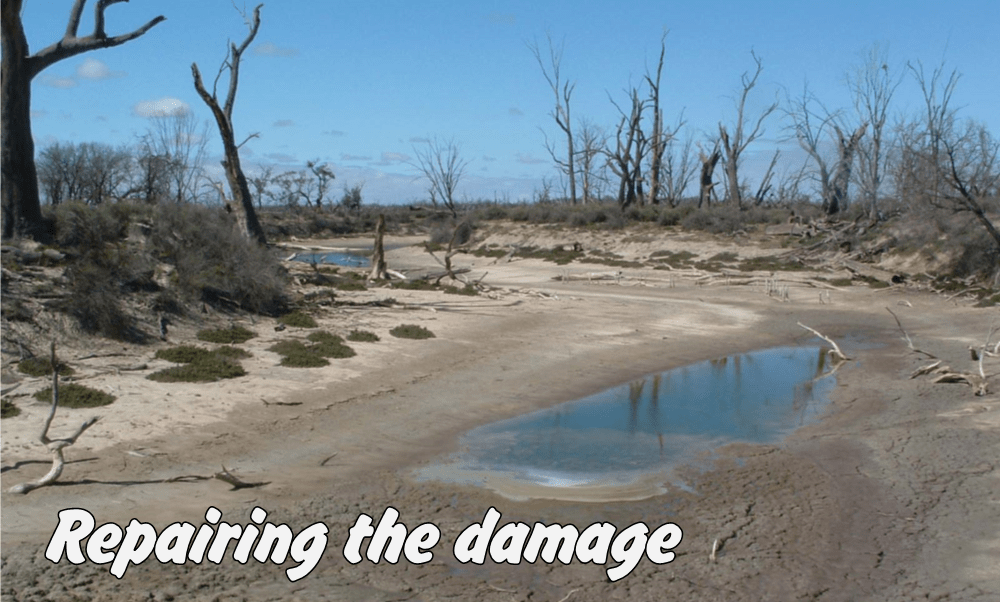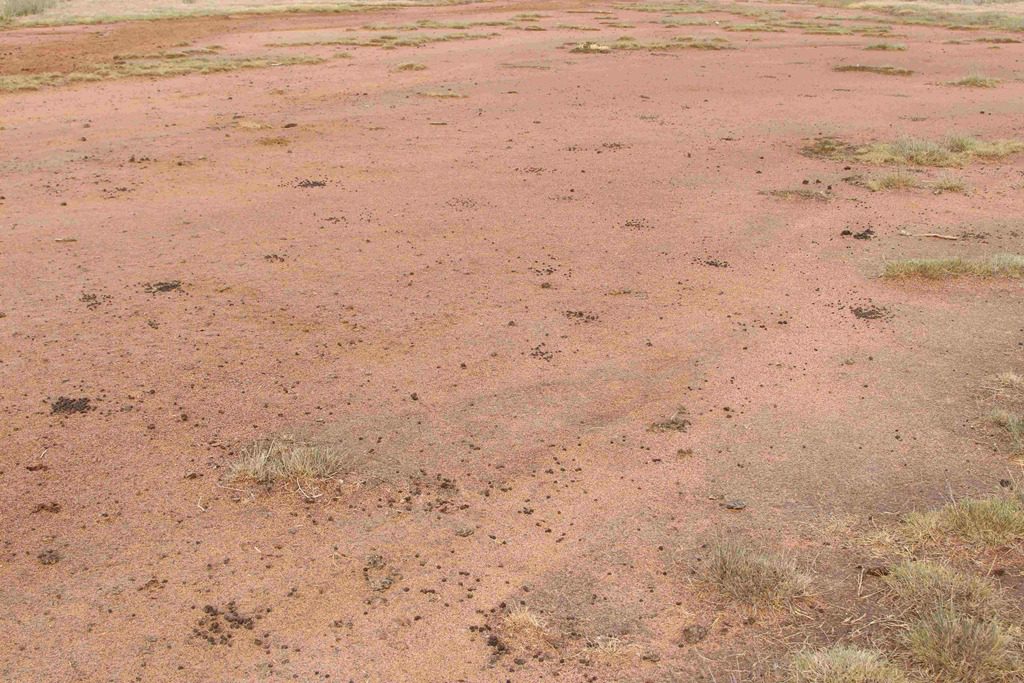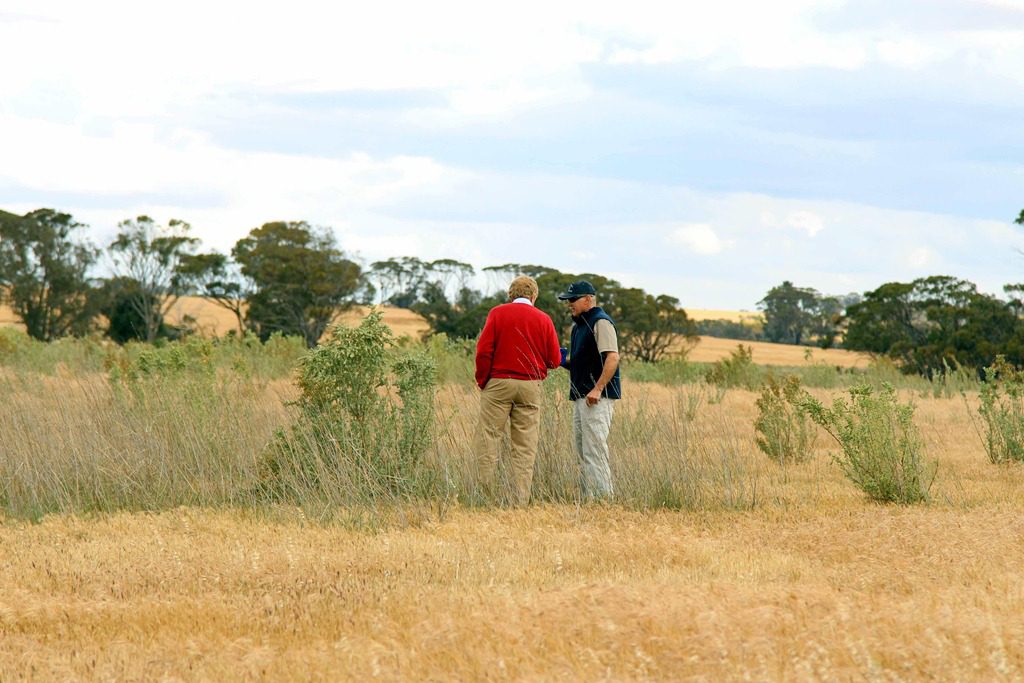Farming: Repairing the damage
Farming

Salt damage
Farming, as we know it today, is relatively new in this old country we call Australia.
In Katanning people have been farming since the arrival of our earliest settler, Eli Quartermaine. Eli would drove sheep from York (Western Australia’s oldest inland town) to what is now the Katanning district. He would then drove them back to York for shearing
After about twenty years brought his family down and started farming permanently.
More pioneering families followed but the area did not begin to flourish until after the construction of the Great Southern Railway from Beverley to Albany when Frederick Piesse and his brother Charles set up business.
Our indigenous community had been living off this harsh land for around 40,000 years. Although not farming in the way we know it, they made use of native fruits, roots, leaves and other items from the bush around them and left only footprints behind them.
Our early farming methods, however, were not really suited to the Western Australian environment and created much long term damage to farming land over many years. With the majority of our farming in those early days coming from the United Kingdom and Europe, they had no understanding of the fragility of the Australian countryside.
Today, of course, farming methods have changed dramatically from those early days. Farmers, with the help of agencies like the West Australian Department of Agriculture, CSIRO, and locally based rural land care groups like Katanning Landcare, are making a difference to the damage from years past. but there is still much to be done.
Great Southern Salt Land Reclamation
A report by Lynne Strong, CEO.
Lynne Strong is an agribusiness and social entrepreneur with a strong record of matching business success with environmental achievements and social change. Whilst at the helm of her family business Clover Hill Dairies Lynne positioned her family business as an internationally recognised innovator in climate change adaptation, environmental stewardship and on-farm research, development and extension and industry change management strategies.
The farm is now run by her son, and Lynne has her own consultancy Farming Ahead of the Curve, which works to position farmers in the supply chain in order to maximise value for their farm business.
Lynne has won agriculture’s most prestigious awards including the inaugural Bob Hawke Medal, the 2013 Green Agriculture Innovation Award, the 2012 NSW Rural and Regional Development Award and the 2010 National Landcare Woolworths Primary Producer of the Year.
The following report was part of her Bob Hawke Medal award.
As a prize winner in the Bob Hawke Landcare Award Lynne was provided an honorary position on the Australian Landcare Council. She will be the first to admit winning Australia’s newest and most prestigious award for sustainable agriculture does not make her an expert on sustainable agriculture everywhere, and paradise is a long way from the salt plains of WA, for example, and has very different issues and needs.So when she found out this board gets out of the boardroom and visits every state and goes on farms, commercial and lifestyle, talks to people and has two-way conversations she knew this was for her.
Her first board meeting was in Katanning, the home of host board member Ella Maesepp. Ella is one of those people Lynne labelled instantly as a “doer”. First and foremost Ella is a broadacre farmer. She is the District Landcare Officer with the Katanning Land Conservation District Committee as well as the winner of the Environment Category of the 2004 Western Australia Youth Awards.
Ella organised a small bus from Perth to Katanning with a number of stops along the way and managed to arrange “great coffee” at just right moment everywhere the team went (in this part of the world salinity is a huge and heartbreaking problem).
Then it was on to Ella’s farm – Dunbar Farm, the home of Ella and her husband David Potter. At Dunbar Farm perennial pastures, mainly Lucerne and saltbush have been introduced to the system since 2005 with improvements in salinity and productivity. Tall what grass and puccinellia have since been added with four paddocks currently under a perennial phase, and six areas of saltbush have been established and fenced out from the paddocks since 2005.
Next up was Craigmore Farms, the property of Ian Knapp. Ian has also made extensive use of saltbush with excellent results as shown below. Craigmore had a large, flat expanse of bare, eroding, salt-affected land. Following on from the success of saltbush planting of their neighbours ( Ella and David) next door at Dunbar a massive saltbush establishment program was undertaken in 2010 with 20,000 seedlings alone planted in that year. Drainage lines were fenced off and planted with trees the following year. The result has been a significant stabilisation of the soil, visible increase in grasses, and a massive splash of green across a once bare area as pictured below.
Neighbours Adrian Richardson and Ian Knapp, however, have completely different views on trees as a result of their different landcare approaches and financial capacity. As Ella commented, “when there are such different views locally how do you communicate a shared view to the wider community?” This is a fairly standard issue in all regions. Nine out of ten farmers learn from other farmers and as long as you have farmers like the Potters, the Knapps, and the Richardsons prepared to open their doors and share their successes and failures progress will be made.
Salt land reclamation on “Craigmore”


To read Lynne Strong’s full report and to check out her blog: Click Here

